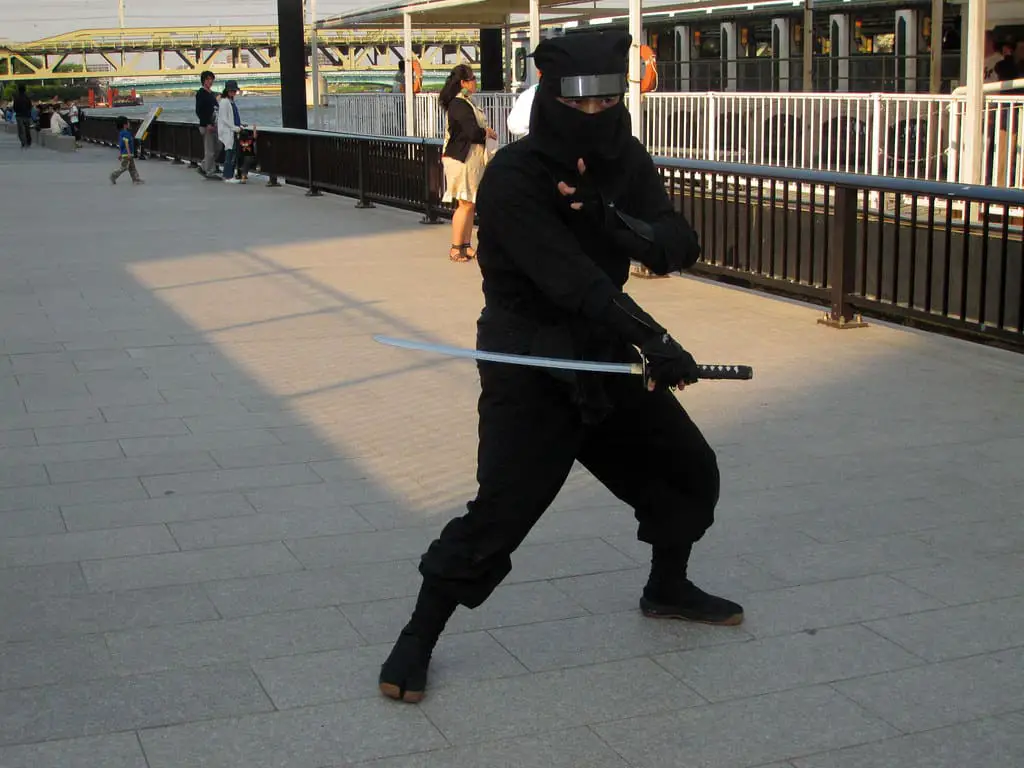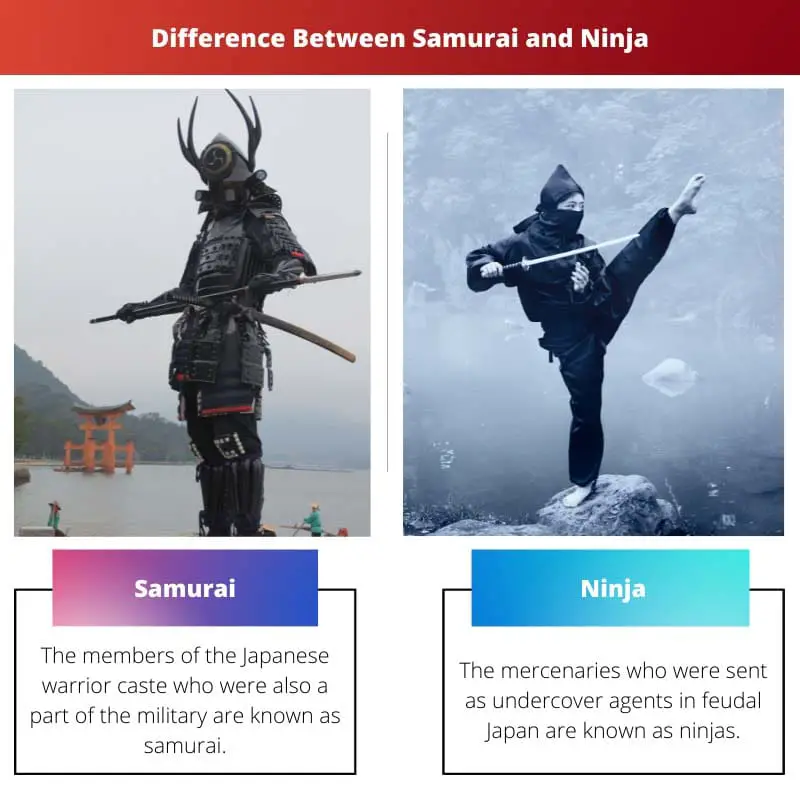Various countries from various parts of the world have their history and heritage. Many people have struggled to achieve certain things in their respective countries.
They have shown their valour and heroism and have put their efforts into making their respective countries a secure place to live in for their future generations and for themselves. Various brave people have fought wars for their countries and have given their best to win them.
These soldiers and warriors have been called different names. These soldiers have been addressed with different names depending on their countries.
Two of those are 1. Samurai, and 2. Ninja.
Key Takeaways
- Samurai were warriors who served a lord, while ninjas were mercenaries who used espionage and assassination tactics.
- Samurai were trained in traditional martial arts and used katanas and spears, while ninjas used shurikens and kusarigama.
- Samurai were known for their honor and loyalty, while ninjas were known for their stealth and cunning.
Samurai vs Ninja
Samurai were trained in martial arts and served as retainers of feudal lords, known for their strict code of honor and skills in arts and crafts. Ninja were mercenaries and spies trained in espionage, sabotage, and assassination, known for their stealth, agility, and cunning.

The members of the Japanese warrior caste who were also a part of the military were known as samurai. The samurai made use of bigger weapons whenever they fought in a war.
They especially made use of samurai swords. The samurai were known as “bushi” in the native Japanese language.
The word “bushi” means a warrior in the native Japanese language. The important lessons that were imbibed in the ancient samurai are passed on to the generations, and they are used and taught to the prevailing generations as well.
The mercenaries who were sent as undercover agents in feudal Japan were known as ninjas. The ninjas used the element of surprise as one of their most powerful tools, along with delusion and intelligence.
They made use of small weapons during the wars and fights. They especially made use of the throwing ninja stars.
They were considered spies and were also addressed as “shinobi”. Even during ancient times, they were highly trained and extremely intelligent.
Comparison Table
| Parameters of Comparison | Samurai | Ninja |
|---|---|---|
| Meaning/ Definition | The members of the Japanese warrior caste who were also a part of the military were known as samurai. | The mercenaries who were sent as undercover agents in feudal Japan were known as ninjas. |
| Also known as | bishu | shinobi |
| Key weapon | Samurai swords | Ninja stars |
| Attire | Armour suits are made of metal. | Black outfits that had maximum coverage. |
| Class | Elite class | Low class |
What is Samurai?
The members of the Japanese warrior caste who were also a part of the military were known as samurai. The samurai belonged to the elite class in ancient Japan, and they wore huge armour suits that were made of metal for utmost protection during wars and fights.
They were highly trained mercenary warriors. The samurai had their independent tactics and methods of ambushes.
They especially made use of samurai swords. The samurai were known as “bushi” in the native Japanese language.
The word “bushi” means a warrior in the native Japanese language. The important lessons that were imbibed in the ancient samurai are passed on to the generations, and they are used and taught to the prevailing generations as well.
The lessons and tactics that were used by the Samurai are some of the most taught and useful strategies in Japanese martial arts. They belonged to the elite class in society and were highly trained for wars.
They used to wear metal armour that used to cover their legs, torso and arms, and they used a metal helmet. The tasks and the clothing followed by these warriors were quite different from the ninjas.
Along with the samurai swords, the samurai were also trained in using arrows, bows and spears during the wars.
The samurai were known for their hand-to-hand fight against the enemies and their agility and adaptability to fight with whichever weapon was available or provided.

What is Ninja?
The mercenaries who were sent as undercover agents in feudal Japan were known as ninjas. The ninjas belonged to the low class in ancient Japan, and the black outfits provided them maximum coverage.
They were highly trained mercenary warriors. The tasks that were assigned to the ninjas were quite different from the tasks that were assigned to the samurai.
The ninjas had their independent tactics and methods of ambushes. The ninjas used the element of surprise as one of their most powerful tools, along with delusion and intelligence.
They made use of small weapons during the wars and fights. They especially made use of the throwing ninja stars.
The ninjas were considered spies and were also addressed as “shinobi”. Even during ancient times, they were highly trained and extremely intelligent.
They were not trained or used for hand-to-hand fights against the enemies, and instead of that, they were sent out for undercover operations. Deception, intelligence and espionage skills were some of the crucial skills possessed by the ninjas.
The tasks and the clothing followed by these warriors were quite different from the samurai. People used to consider and categorise them in the low class, and because of that fact, they also thought that people need not see them.
They were given preference whenever a sneak attack was supposed to be done.

Main Differences Between Samurai and Ninja
- The samurai made use of bigger weapons like a samurai sword. On the other hand, the ninja made use of smaller weapons like ninja stars.
- The suit of armour worn by the Samurai covered their torso, legs and arms, and the helmet covered the skull. On the other hand, the black outfit worn by the ninjas used to cover their entire body, and only their eyes were visible.
- The members of the Japanese warrior caste who were also a part of the military were known as samurai. On the other hand, the mercenaries who were sent as undercover agents in feudal Japan were known as ninjas.
- The form of attack used by the samurai was different from the form of attack used by the ninjas.
- The samurai were also addressed as “bishu”. On the other hand, the ninjas were addressed as “shinobi”.

